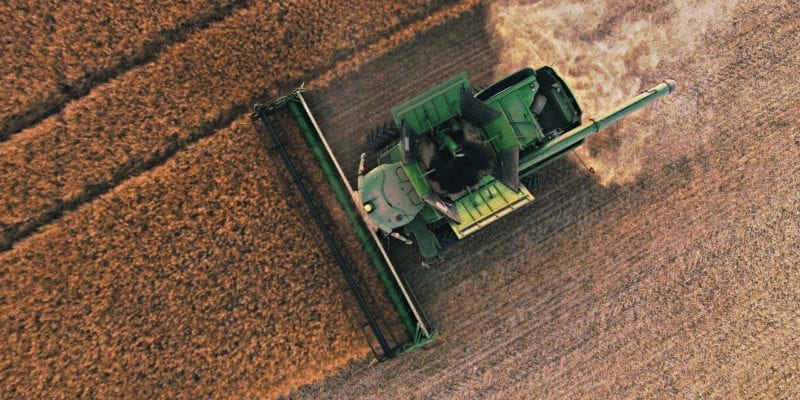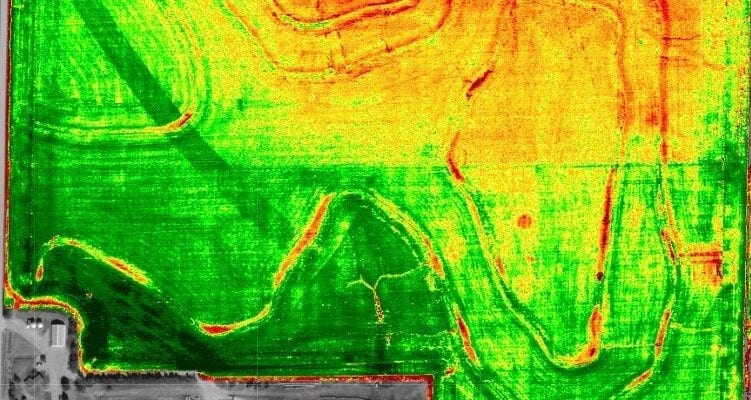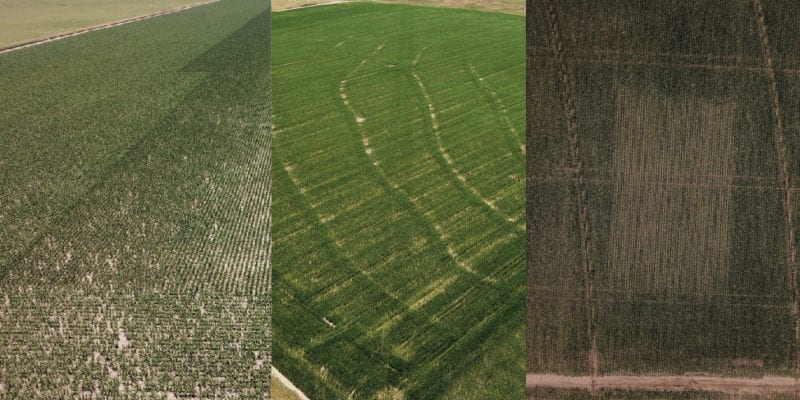The role calibrated imagery plays in your fertility ROI Using dirty data when trying to…

Maximize Yield and N Efficiencies Using In-season Data
Past Yield Data isn’t an Accurate Prediction of Current Nitrogen Need
Yield potential changes year-to-year due to temporal variability (rainfall, temperature, relative humidity, etc.). Since we can’t control the weather and yearly patterns can change dramatically, past yield data is an unreliable and inaccurate indicator for current nitrogen needs. In-season yield potential and nitrogen recommendations are specific to the current season – not past seasons’ data.
YIELD POTENTIAL AND RESPONSE INDEX DEFINED
Yield potential is the grain yield that can be achieved without an additional nitrogen fertilizer application.
Response index is calculated by taking the yield potential in the N-Rich Strip and dividing it by the yield potential in the farmer practice (rest of the field).
RELATIONSHIP BETWEEN GRAIN YIELD AND RESPONSE TO NITROGEN
Nitrogen is a mobile, limiting nutrient. If a nutrient is deficient, that deficiency should be expressed both as a function of intensity (severity of the deficiency) and capacity (total demand).
Most see nitrogen rate and yield being correlated. Yet, research states it is not. Nitrogen uptake is 100 percent correlated to yield. It takes a given amount of nitrogen to produce a bushel of wheat and corn. Nitrogen fertilizer need; however, is not correlated with nitrogen uptake.
This is due to the environment giving and taking available nitrogen from the plant – organic matter mineralization and immobilization, and leaching, denitrification and volatilization losses. All of these processes are specifically controlled by weather, rainfall and temperature. This means while yield and nitrogen uptake are correlated, those values are not correlated to nitrogen rate, because the amount of nitrogen in the soil is controlled by the weather. That’s why nitrogen fertilizer need is determined by both a yield component (total demand) and nitrogen responsiveness (severity of deficiency).
Stanford Equation:
N Rate = (Crop N Uptake – SoilN)/Efficiency
Dr. Brian Arnall, Oklahoma State University Precision Nutrient Management Specialist, explains the Stanford Equation in this short video.
Since yield and nitrogen responsiveness are independent of one another, and because both affect the demand for nitrogen fertilizer, estimates of both should be combined to calculate a realistic in-season nitrogen recommendation.
Sensors, like the GreenSeeker, enable you to measure real-time normalized difference vegetative index (NDVI) and crop variability. Our system incorporates the GreenSeeker to accurately measure in-season, active NDVI. This NDVI can be used to predict yield potential. The same NDVI can be used to determine nitrogen response by comparing the N-Rich Strip and Farmer Practice (rest of the field).
PAST YIELD ≠ CURRENT NITROGEN NEED
Maximum yields do not always correspond with a high nitrogen rate. Yield and nitrogen responsiveness are independent of each other and vary significantly year-to-year. Methods that combine the two without considering this independence can create large errors in nitrogen application rates.
An example is when algorithms use a sufficiency index approach – meaning nitrogen is not limited or mobile. This method also disregards the variability in nitrogen response and yield, which both are heavily dependent on the environment. In the sufficiency approach, the final nitrogen rate recommended is fixed to a percentage sufficiency and not to the current season’s potential yield.
Knowing potential yield is fundamental for calculating cereal crops’ nitrogen applications. Research has proven early-season NDVI sensor readings can predict yield potential for corn and wheat. This is where Ninja Ag steps in to provide a proven, easy button solution to predicting yield.
Once yield potential and nitrogen responsiveness are predicted independently of one another, our algorithm combines the two to give an in-season nitrogen recommendation to help achieve maximum yields. With our system and the GreenSeeker, users can easily input required data and get a variable rate nitrogen recommendation and a yield prediction map for wheat, corn, sorghum, cotton and canola.
THE NINJA WAY
To get the best possible yield prediction and nitrogen recommendation, fertilizer need must be based on independent assessments of yield potential and nitrogen responsiveness. It’s problematic to apply a fixed rate of fertilizer each year, or a rate based on a sufficiency value that does not compensate for predicted yield levels.
Without an N-Rich Strip, it would be impossible to determine nitrogen demand fluctuation overtime. Also, it would not be possible to estimate nitrogen responsiveness without an N-Rich Strip. Keeping in mind nitrogen is a limiting nutrient, our methodology ensures a correct, realistic in-season nitrogen recommendation by verifying responsiveness and optimum growth in repeatable conditions.
Data points are collected using Trimble’s GreenSeeker handheld crop sensor. Once GreenSeeker data points are collected from a few points in the field, information is put into our system where we will automatically make these calculations to deliver a variable rate nitrogen recommendation. Each nitrogen recommendation order comes with a yield prediction map and return on investment map.
For more information on how to get started with Ninja Ag, contact our agronomist Tyler Lynch at tlynch@ninjaag.com.
SOURCES
www.npk.okstate.edu
www.osunpk.com
www.nue.okstate.edu



